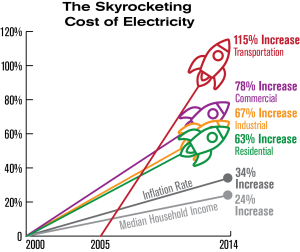A feed-in tariff is a pinnacle price charge paid for strength fed again into the strength grid from a chosen renewable strength era deliver like a rooftop solar power gadget or wind turbine. At present, feed-in tariff hints for renewable power exist in over 40 international locations spherical in the area of Reliant Energy Reviews .

It is Possibly the most successful feed-in tariff criminal hints are probably those added in Germany over the past 15 years. In 1991 the German government added the Electricity Feed Act, legally regulating the feed-in to the grid of strength generated from renewable belongings which include solar power. This Act required utility corporations to shop for strength generated from renewable belongings which include domestic solar power systems at set rates feed-in charge catalogue.
The scheme changed into advanced and more in 2000 and has been responsible for the dramatic increase in Germany’s renewable power market, specifically the solar photovoltaic organization. In the five years from 2000, the quantity of strength fed into the grid from eligible assets has greater than doubled, with a seven-fold boom in installed solar photovoltaic (PV) ability to over 1,500 MW via the stop of 2005.
Drawbacks of this plan
Residential solar power is extraordinarily disadvantaged due to the immoderate get admission to costs. The market fails to remember the actual charge and plenty of benefits to the strong network which upward thrust up from the adoption of renewable power era embedded withinside the strength grid.
Solar PV, like unique renewable power assets, provides environmental benefits through reduced greenhouse fueloline emissions and social benefits through organization development and project creation – as an instance through the installation of the grid be a part of solar systems, each with related financial benefit.
A feed-in tariff redresses the systemic market failures and rewards the solar electric powered era for its actual charge to the strong market and wider society, via supplying a financial incentive for the adoption of renewable power.
For a feed-in tariff to be effective, it is essential that the tariff furnished is designed in a way to correctly reward solar PV proponents. There are three key elements of a feed-in mechanism that need to be considered: The fee level of the tariff; the technique of metering; and the period of the scheme. It is the proper aggregate of these three elements, so one can determine the success or failure of a feed-in mechanism.
An effective scheme would possibly incorporate a feed-in tariff of at least 4 times the market charge, paid on the entire output of a solar power gadget (via gross production metering), and furnished for at least 15 years. Only a gross feed-in tariff set at or above the one’s tiers would possibly correctly reward the adoption of solar PV for the kind of environmental, social, and financial benefits bobbing up from this era, and encourage the uptake at sufficient tiers to benefit the insurance goals.
When Germany added gross feed-in charge lists in 2000 it doubled the amount of strength generated from renewable power reasserts and modified its 2010 intention of 12.five% of popular power consumption. It is now three years in advance of schedule.
As a final result of this success, Germany recently increased its renewable power intention to 27% of all strength era via 2020. Also, the gross feed-in tariff has created nearly 250,000 new jobs withinside the renewable power organization, so one can speedy surpass the car organization as that nation’s number one employer.
The German solar power area is now developing three times the kind of jobs in line with installed megawatt due to the fact the coal-fired strength organization – all of this in a country receiving an entire lot plenty much less sunshine than unique additives of the area now not taking element in similar programs, or sincerely carrying out minimal participation.







